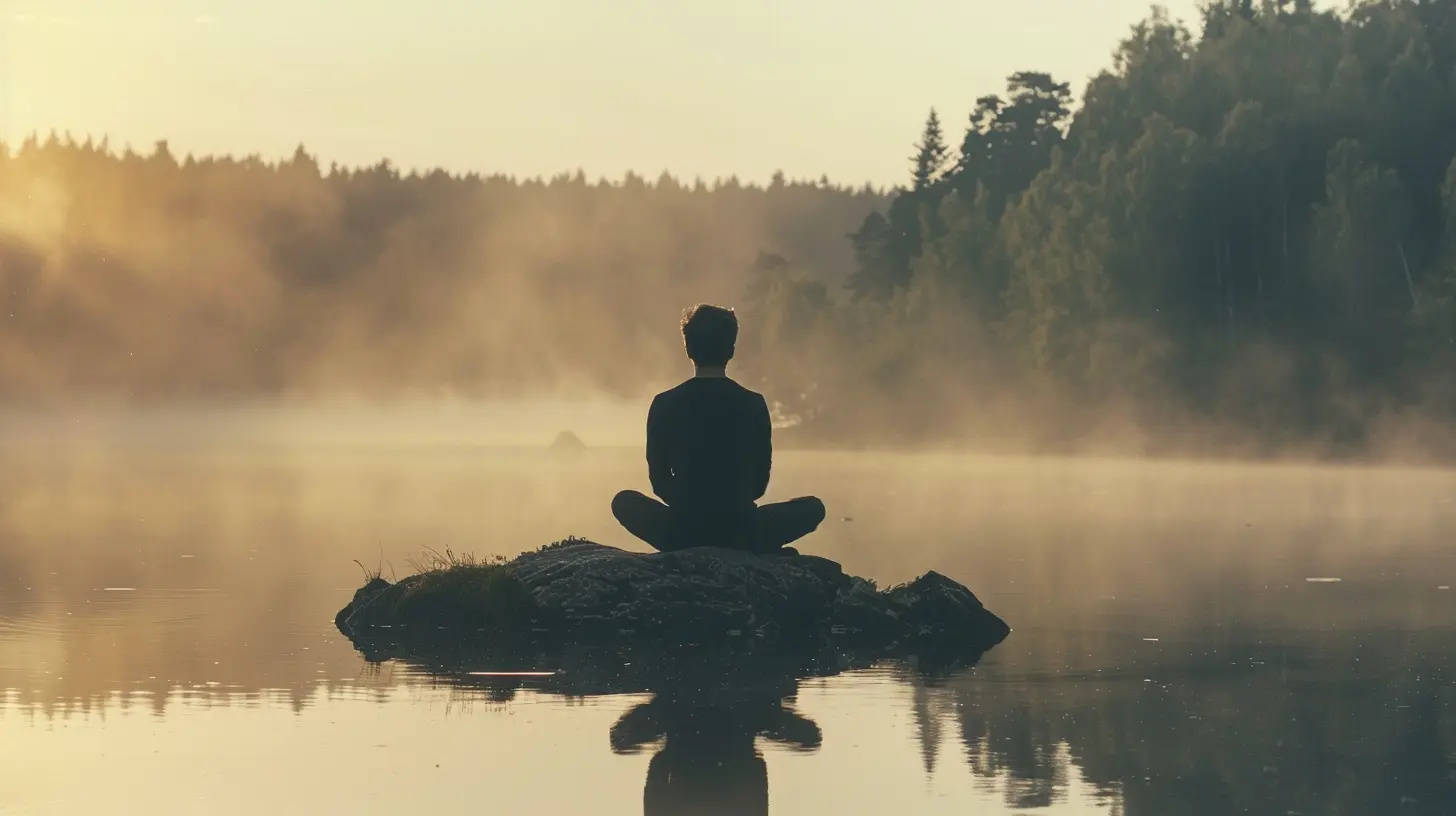How to Use Grounding Techniques to Combat Anxiety
26 June 2025
We all know that anxious feeling — like your heart is racing, your thoughts are spiraling, and no matter what you do, you can’t seem to quiet your mind. Anxiety is like a storm cloud that suddenly appears, sometimes without warning. But here’s the good news: you don’t have to let it take over. There’s a simple, science-backed way to pull yourself out of that mental fog — grounding techniques.
Grounding techniques are powerful tools that help bring you back to the present moment. They’re not magic, but when used consistently, they can make a world of difference. Let’s dive into what grounding really is, why it works, and exactly how you can use it to take back control when anxiety tries to hijack your day.
What Are Grounding Techniques?
Think of grounding like hitting the reset button in your brain. When anxiety floods your system, your thoughts tend to focus on worst-case scenarios, feared outcomes, or regrets about the past. Grounding techniques gently steer your attention away from those “what ifs” and back toward the here and now.Grounding uses your five senses or mental exercises to help you anchor yourself in reality. Whether it’s feeling the texture of your jeans, listening to the hum of a fan, or naming objects around you—these simple actions can help disrupt anxious patterns and refocus your mind.
Why Grounding Works for Anxiety
But why does it work? Anxiety lives in the mind, but grounding lives in the body. When anxiety kicks in, your fight-or-flight response flips on. Your body perceives a threat (even if it’s only in your mind), and your nervous system goes into overdrive.Grounding techniques help “trick” your brain into realizing that you’re safe. When you touch something real, listen to nearby sounds, or even just wiggle your toes, you’re reminding your body that there’s no immediate danger. This taps into your parasympathetic nervous system—what’s often called the “rest and digest” mode—and helps restore calm.
The Best Grounding Techniques to Try (And Stick With)
Let’s walk through some grounding techniques that are not only practical but also super easy to do—anytime, anywhere. Each person is different, so some might work better than others for you. Think of it like trying on shoes—you’ll find the right fit.1. The 5-4-3-2-1 Method
This is hands-down one of the easiest and most popular grounding exercises. It’s all about tuning into your senses. Here’s how it goes:- 5 things you can see
- 4 things you can touch
- 3 things you can hear
- 2 things you can smell
- 1 thing you can taste
For example, right now you might see your phone, a lamp, your socks, a notebook, and a coffee mug. You might touch the cool glass of the mug or the soft fabric of your shirt. This technique shifts your focus outward and away from the chaos in your mind.
> Tip: Keep a small list in your phone in case anxiety strikes and you forget the steps.
2. Deep Breathing Exercises
Ever notice how fast and shallow your breathing gets when you’re anxious? That’s no coincidence. Deep breathing is like a signal to your nervous system that says, “Hey, we’re okay.”Try this method:
- Breathe in for 4 seconds
- Hold for 4 seconds
- Breathe out slowly for 6-8 seconds
Repeat this for a few minutes. It’s like flipping a switch to calm mode. You can even add a visual cue, like imagining you're blowing out birthday candles.
3. Use a Grounding Object
Keep a small object in your pocket — maybe a smooth stone, a stress ball, or a piece of textured fabric. When you feel anxiety rising, pull it out and focus all your attention on it. What does it feel like? Is it cool or warm? Rough or smooth?This tangible, physical sensation anchors you in reality, especially if your thoughts are starting to spiral.
4. Move Your Body
Simple movement can pull you out of your anxious headspace. You don’t need to run a marathon — just stand up, stretch, walk around the room, or do a few jumping jacks. Movement re-engages your muscles and helps you feel more present.Bonus tip: Pair movement with mantras like, “I’m grounded,” or “This feeling will pass.”
5. Sound Grounding
Sound is another powerful trigger for calming the mind. You can:- Listen to music with calming lyrics or no lyrics at all
- Put on a guided meditation
- Run white noise (like rain sounds or ocean waves)
- Use noise-canceling headphones in overstimulating environments
Tuning in to sound helps drown out anxious thoughts and pulls your focus into the now.
6. Mental Grounding Techniques
If you're somewhere where physical grounding isn't possible, use mental techniques:- Alphabet Game: Pick a category (like animals or songs) and name one for each letter of the alphabet.
- Count Backwards: From 100 by threes or sevens. It takes concentration and helps block out anxious thoughts.
- Positive Affirmations: Repeat calming phrases like, “I am safe,” “I am in control,” or “This too shall pass.”
How to Know Which Grounding Technique Is Right for You
There’s no one-size-fits-all. Try experimenting with a few techniques and take notes on how your body and mind respond. Ask yourself:- Did I feel calmer afterward?
- Was it easy to remember and use?
- Would I use it again in public or in private?
The key is to have a “toolkit” of techniques. What works at home might not work at work, and vice versa. Having several options gives you more power and confidence when anxiety creeps in.
When to Use Grounding Techniques
Grounding isn’t just for full-blown panic attacks. Use it anytime anxiety or stress shows up:- Before a presentation or interview
- In a crowded or noisy place
- After a difficult conversation
- When you're overthinking or can’t sleep
- During flashbacks or intense worry
Think of grounding like mental first aid — the earlier you intervene, the better.
Common Mistakes to Avoid
Hey, grounding is simple, but don’t worry if it takes a bit of practice. Here are a few common missteps and how to avoid them:- Trying to force it – If a technique isn’t working, switch it up. There’s no shame in trying something else.
- Giving up too fast – Some methods take a few minutes to kick in. Stick with it a bit longer before jumping to the next.
- Being too hard on yourself – Grounding isn’t about perfection. You might still feel anxious afterward — and that’s okay. The goal is to reduce, not erase.
Grounding Techniques for Children and Teens
Kids feel anxiety deeply too, even if they can’t always explain it. Grounding techniques are great because they’re simple and can be turned into games:- Color Hunt: “Name five red things you can see.”
- Sensory Box: Fill a box with different textures, toys, or scented items.
- “Superhero Pose”: Standing tall and breathing deeply can help them feel strong and safe.
Involve them in the process, and let them pick which tools help most. The earlier they learn to manage anxiety, the stronger their emotional toolkit will be as they grow.
Final Thoughts: Make Grounding a Daily Habit
You don’t need to wait until anxiety strikes to practice grounding. In fact, the more often you use these techniques, even on “good” days, the more effective they’ll become when anxiety shows up uninvited.It’s like training a muscle — the more you do it, the stronger it gets. So build a routine. Sprinkle small grounding moments into your day. It could be a morning breath practice, a midday sensory check-in, or falling asleep to calming sounds.
Anxiety doesn't define you. Grounding is one of the many tools you can use to take back peace, one breath, one moment, one sensation at a time.
Quick Recap
- Grounding techniques help anchor you in the present and reduce anxiety.- They use your senses and physical surroundings to distract and calm the mind.
- Popular methods include the 5-4-3-2-1 technique, deep breathing, and focused movement.
- Grounding can be practiced anytime and is effective for both adults and kids.
- Make it a habit — don’t wait for anxiety to take center stage.
all images in this post were generated using AI tools
Category:
AnxietyAuthor:

Alexandra Butler
Discussion
rate this article
2 comments
Brick Bennett
Grounding techniques are like your mental safety net—simple yet powerful tools that tether you to the present. When anxiety tries to pull you under, these strategies can help you float above the chaos and regain control. Breathe, focus, and ground yourself.
September 15, 2025 at 2:33 AM

Alexandra Butler
Thank you for your insightful comment! Grounding techniques truly serve as essential tools for maintaining presence and managing anxiety. Your analogy of a safety net beautifully captures their importance.
Flynn McFee
Grounding techniques empower us to reclaim our present moments amidst anxiety's chaos. Embrace these tools to foster self-awareness, resilience, and inner peace. Remember, every small step towards grounding is a giant leap towards emotional freedom!
July 5, 2025 at 5:04 AM

Alexandra Butler
Thank you for highlighting the power of grounding techniques! They truly can transform our experience of anxiety and lead to greater emotional freedom.


